Vetusta Morla, the Fine Art of Melancholy
Vetusta Morla, el fino arte de la melancolía
David Dorantes
Literature and rock is a pairing that goes far beyond a simple analysis of mere beats and metrics. It is a very deep-rooted and powerful sociocultural phenomenon in modern societies thanks to the rockers who immersed in literature to nurture their work.
Robert Zimmerman paid tribute to his favorite poet Dylan Thomas by using Bob Dylan as his stage name. Jim Morrison suggested the name for his band after reading Aldous Huxley. Joy Division took its name as a reference to the work of Ka-Tzetnik. In Led Zeppelin there are dozens of quotes to the magical characters of J.R.R. Tolkien. Tom Waits referred to Jack Kerouac, Charles Bukowski, J.D. Salinger and Tennessee Williams for his black and white songs about the loneliness of the American working class. There are plenty of examples.
Vetusta Morla, the Spaniard band, is one of the new flagships of that rock with literary ascendant. Name is destiny: Vetusta Morla is an ancient turtle created by the German author Michael Ende in his book The Endless Story (1983). Forewarned is forearmed.
The five albums of the Spaniard sextet exude metaphorical poetry, allegories, free verses, rhymes with analogies and symbolisms. We are not going to explain them here. It is better for Juan Manuel Latorre (guitar and keyboards) to reveal, in a telephone talk from Madrid, the literary keys of a group that was formed in a middle school from Tres Cantos, a small municipality north of Madrid, with the best genesis that a rock band can have: Teenagers pissed off at the world and willing to bother everybody with their electric guitars. People like that are trustworthy.
“For us is highly important in our music the presence of poetry in particular, and literature in general… to such an extent that it is an idiosyncratic element. It is our hallmark and we have adopted it as our identity. In the time we left Spain there were few groups that sang in our language. At that time, to sing in English was for many the most practical way to have international projection. This was 20 years ago… we realized that English was too short for us to express some depth and certain background that we wanted to communicate. As the pervasive readers that we are and being poetry lovers as well, we decided to add that to our music”, Latorre explains with a soft and leisurely voice.
The literary background in all members of Vetusta Morla launched them against the tide of fashions and trends.
Along with Latorre the group is formed by Juan Pedro Martí (voice), David García (drums), Álvaro B. Baglietto (bass), Jorge González (percussion and programming) and Guillermo Galván (guitar and keyboards), the latter author of the poetry book Retrovisores (Rearviewers) from Editorial Bandaaparte, 2015.
Latorre says that in his perspective “rock and poetry are art forms that are very close. For us the power of metaphor in the word is very close to the power of conceptual abstraction in music. Rock is an art that is not concrete, that is abstract; so when we find a melody that unveils and helps us discover something that allows us to glimpse a feeling, a memory, which is almost always produced in a non-rational way … almost as a finding a little mystical; for us has a lot to do with the same thing that happens when we find a metaphor, a poem, a poetic side that has its own rhythm, its own melody. For us that relationship between both arts is barely exploited in Spanish rock”, he says.
For those who want to get started in the fine art of rock metaphors of Vetusta Morla, explore their splendid albums Un día en el mundo (One day in the world, 2008), Mapas (Maps, 2011), Los ríos de Alicia (Alice’s rivers, 2013), Drift (2014) and Mismo sitio, distinto lugar (Same site, different place, 2014).
Albums marked with a lyric that transits between defeated existentialism and hope with chords of sound experimentation almost like a surrealist soundtrack on the keyboards while the riffs distill melancholic rage.
The rock of Vetusta Morla resembles closely only the rock of Vetusta Morla. There is no other drawer in which they can be accommodated. Although it is true that several relevant influences are noticed.
Latorre does not want to explain the lyrics of the songs.
“That is the listener’s responsibility” he says laughing, then points “the context of everyone who receives a song is totally different, the interpretation is the responsibility of the one who listnes the song. The one who is listening to a song does not have the text in front to read it. The way to assimilate the text of a song is very different from that of a poem … we found out that the lyrics need not be understood in their entirety. We are interested in its capability of provoking emotions and activate emotional springs in the listener. It is not necessary for everyone to understand what we want to tell … the only important thing is that along with the music it does not leave anyone indifferent. The greatness of a song resides in that the lyrics are linked to the music, to the melody, in the fact that you cannot separate them. The fine concepts of analysis of our songs is a plus that we greatly appreciate to whoever does it, but it is no longer necessary”.
Vetusta Morla covers all her songs with a patina of melancholy. His themes convey that feeling, perhaps because of Martí’s interpretation, or maybe because his work leitmotiv underlies as the fact that everybody reaches a point of no return in life, or maybe because in our day by day we are going through a dead-end road.
“It is true, the quotes we have given out of a melancholic halo are few, although sometimes we try to do it” acknowledges Latorre about the climate that runs the work of the group and details that “sometimes we dare with songs, such as El discurso del Rey (The King’s speech) or Palmeras (Palms) in the spot, who instead of going to the melancholic try to play the ironic or even the satirical costumeries. But in general that melancholic coating is something that permeates all of our songs. I guess that is relatively convenient for us to tell. For some reason, if we go into psychoanalysis, we feel comfortable placing our stories and characters in melancholic landscapes”, he says in a thoughtful tone and pauses between his sentences like meditating while chatting.
Another relevant element in Vetusta Morla is the permanence of the band’s original members after two decades of constant music.
An exercise in style and loyalty that is not common in the world of rock where exacerbated egos play almost as another member after fame is achieved.
Latorre does not fully explain what allows them to remain united after so many years of artistic creation. He explains that collective creation is also an exercise in style that demands will and commitment.
“The truth is that I don’t know how we’ve been together for so many years!” Latorre admits and throws “I think it was because we dared to preserve the things we have in common. Maintaining any type of relationship for more than 20 years is already an achievement. When we began to play in school, our day-to-day lives, our tastes, interests and concerns were very similar for all. As we have grown older those co-incidences have been separating … so you have to do a constant exercise to remember what unites us, what we like to do together, what we like about each other even if there are other thousand things that we hate, for example our last album is a very premeditated exercise and aware of grasping the things that we have in common and that define us as a band ”details the musician.
Precisely, his last album Mismo sitio, distinto lugar came out two years ago, is his shortest work. It’s only 38 minutes in 10 songs. An album that, according to Latorre, is the result of its maturity and the search for a capacity of synthesis where they state that, as in a haiku, brevity is the basis of depth.
“We had 19 songs well finished from top to bottom… but it was decided by common agreement to choose these 10. Discarding some of the songs was very painful. What we wanted to do was an exercise of maturity and an important synthesis for us. It is important for an artist to know when to put the last period in a work. But it is difficult” explains Latorre again in that reflexive tone that he acquires when he talks about the important things.
The sound frame on which Vetusta Morla presents its melancholic lyrics is a polychrome that goes from the most basic rock and goes towards punk, funk and passes through electronic music with the experimental manipulation of sounds with the help of loops that are overlapped on each other in different textures.
If we pay attention to their music, we notice the intertwined influences of bands and artists as significant as The Beatles, Radiohead, The Kooks, Muse, Leonard Cohen, Jamiroquai, Franz Ferdinand, Wilco and Jeff Buckley.
“We have found it very useful to incorporate synthesizers, samplers and drum machines using all the manipulation palette that electronic music gives you… we have maintained the spirit of rock in our songs but with that super extended palette. Thanks to that, our music has many more colors” reveals Latorre, who explains that the composition of all the themes in Vetusta Morla works as a collective creation workshop where the ideas of each of the members are welcome and put into debate.
Like few rock artists in Spain, perhaps only compared to singer-songwriter Enrique Bunbury, Vetusta Morla has achieved something really amazing: Creating a base of loyal fans in the United States. Especially considering that they are a band emerged from the underground and without the support of any large record company.
It all started for them on March 17, 2012 when they performed at the Beale Street Tavern in Austin, Texas, in the framework of the South by Southwest (SXSW) festival to just over twenty people and with only 4 songs as a business card.
Now they tour the United States and sell out theater locations for several thousand. Their concerts attract a diverse audience of Latin American immigrants and even Anglo-American. These shows have become musical celebrations of the growing force that Spanish language has got in the great American empire. A whole growing social phenomenon.
“There is a commitment of ourselves with the viewer … It comes from an issue in which we think that music is not a quantitative issue and that any audience, however small, deserves to give the best you have. It doesn’t matter if it’s 20 or 20 thousand. Every person who has the kindness to come to see us, to get excited when we tell him a story, deserves that we give the best of ourselves. That is the way we understand it. We cannot go on a stage just to take a walk“, says of the long and sustained effort to gradually make it in a country that, at first impression, seems to have little to do with them beyond the cradle of the blues, then jazz and rhythm and blues that came together to give birth to rock and roll; the same rock that was thrown around the world to become nourished and fed by the water of many rivers.
It is rock with literary influence that Latorre respects and to whom he dedicates some of his most thoughtful phrases.
The musician sees it as something that goes beyond the topic that it is only music from youth to the youth. In his perspective, it is really a kind of artistic inconformity that goes beyond generations and other socio-cultural boundaries.
“Rock has already been established as a way of looking at reality. As a way at best, very critical to look. Although it is true that rock has also entered more domesticated phases. What rock has is its capacity for flexibility to be contaminated by different tools and genres to remain a hipster beyond the topic of youth … that is, to be intrinsic nonconformists and not necessarily linked to a generational conflict. I have an extraordinary faith in the ability of rock to establish a look on reality. I think that that is why it continues to survive so strongly… because of its critical, rebellious and rebellious essence”, concludes Latorre.
With his art of melancholy poetry with guitars explosions, Vetusta Morla bursts in like a rock band in which the lyrics do matter, as well as the music, to maintain a critical and rebellious look from the trench of art. Far beyond mere beats and metrics.
 David Dorantes (Guadalajara, Mexico) journalist and writer. He has been a sports, culture, crime and special investigative reporter for the Siglo 21, Público-Milenio and Houston Chronicle newspapers, as well as a music columnist for the Primera Plana y Cambio weekly. He took the Journalism Chronicle workshop with Gabriel García Márquez invited by the Foundation for a New Ibero-American Journalism 2000 and won the Emissary Journalism Prize of the University of Guadalajara 2000. One of his stories appeared in the anthology Tell me if you have not wanted. Anthology of exiled tales (2018), the first of Latin American authors in Houston. He is currently a freelance journalist for several publications in the United States, Mexico and Spain. His Twitter is @HDaviddorantes
David Dorantes (Guadalajara, Mexico) journalist and writer. He has been a sports, culture, crime and special investigative reporter for the Siglo 21, Público-Milenio and Houston Chronicle newspapers, as well as a music columnist for the Primera Plana y Cambio weekly. He took the Journalism Chronicle workshop with Gabriel García Márquez invited by the Foundation for a New Ibero-American Journalism 2000 and won the Emissary Journalism Prize of the University of Guadalajara 2000. One of his stories appeared in the anthology Tell me if you have not wanted. Anthology of exiled tales (2018), the first of Latin American authors in Houston. He is currently a freelance journalist for several publications in the United States, Mexico and Spain. His Twitter is @HDaviddorantes
©Literal Publishing
La literatura y el rock es un maridaje que escapa de un análisis de meros compases y métricas. Es un fenómeno sociocultural muy arraigado y poderoso en las sociedades modernas gracias a los rockeros que abrevaron en la literatura para nutrir su trabajo.
Robert Zimmerman rindió tributo a su poeta favorito Dylan Thomas al usar como nombre artístico el de Bob Dylan. Jim Morrison sugirió el nombre para su grupo luego de leer a Aldous Huxley. Joy Division tomó su nombre como referencia a la obra de Ka-Tzetnik. En Led Zeppelin hay decenas de citas a los mágicos personajes de J.R.R. Tolkien. Tom Waits nombra como referencias a Jack Kerouack, Charles Bukowski, J.D. Salinger y Tennessee Williams para sus canciones en blanco y negro sobre la soledad de la clase obrera estadounidese. Los ejemplos sobran.
En español el grupo Vetusta Morla es uno de los nuevos buques insigna de ese rock con ascendente literario. Nombre es destino: Vetusta Morla es una milenaria tortuga creada por el autor alemán Michael Ende en su libro La historia interminable (1983). El que avisa no es traidor.
Los cinco discos del sexteto español exudan poesía metafórica, alegorías, versos libres, rimas con analogías y simbolismos. Acá no las vamos a explicar. Es mejor que Juan Manuel Latorre (guitarra y teclados) revele en charla telefónica, desde Madrid, las claves literarias de un grupo que se formó en un instituto escolar del pueblo de Tres Cantos y con el mejor génesis que puede tener una banda de rock: Unos adolescentes cabreados con el mundo y dispuestos a incordiar a guitarrazos. La gente así es de fiar.
“Para nosotros es importantísima la presencia de la poesía, en particular, y de la literatura en general en nuestra música… hasta tal punto que es un elemento idiosincrático. Es nuestra seña de identidad y que hemos enarbolado como una bandera. En el momento en que nosotros salimos en España había pocos grupos que cantaran en nuestro idioma y en aquel entonces para muchos lo más práctico con el objetivo de tener una proyección, entre comillas, a nivel internacional era cantar en inglés. Estamos hablando de hace 20 años… nosotros nos dimos cuenta que el inglés nos quedaba muy escaso para expresar cierta profunidad y cierto trasfondo que queríamos comunicar. Como lectores emperdernidos que somos, y amantes de la poesía, decidimos sumar eso a nuestra música” explica Latorre, con una voz suave y pausada, sobre el ascendente literario en los integrantes de Vetusta Morla que los lanzó a contracorriente de modas y tendencias.
Junto a Latorre completan al grupo Juan Pedro Martí (voz), David García (batería), Álvaro B. Baglietto (bajo), Jorge González (percusión y programación) y Guillermo Galván (guitarra y teclados), éste último autor del poemario Retrovisores (Editorial Bandaaparte, 2015).
Latorre asegura que en su perspectiva “el rock y la poesía son formas de arte que están muy próximas. Para nosotros el poder de la metáfora en la palabra se acerca muchísimo al poder de la abstracción conceptual en la música. El rock es un arte que no es concreto, que es abstracto, entonces cuando hay un hallazgo en una melodía que descubre algo que nos permite vislumbrar un sentimiento, un recuerdo, que se produce casi siempre de una manera no racional… casi como un hallazgo un poco místico, eso para nosotros tiene mucho que ver con lo mismo que ocurre cuando hay un hallazgo de una metáfora, o de un poema, de un sesgo poético que tiene su propio ritmo, su melodía. Para nosotros esa relación entre ambas artes está apenas explotada en el rock en español” sostiene.
Para quien quiera iniciarse en el fino arte de las metáforas rockeras de Vetusta Morla pasen ustedes a sus espléndidos discos Un día en el mundo (2008), Mapas (2011), Los ríos de Alice (2013), La deriva (2014) y Mismo sitio, distinto lugar (2014).
Discos marcados con una lírica que transita entre el existencialismo derrotado y la esperanza con acordes de experimentación sonora casi como de una banda sonora surrealista en los teclados mientras que los requintos destilan rabia melancólica. El rock de Vetusta Morla sólo se parece mucho al rock de Vetusta Morla. No hay ningún otro cajón en el que se les pueda acomodar. Aunque es cierto que se advierten varias influencias relevantes.
Latorre no quiere entrar en el juego de explicar las letras del grupo.
“Eso ya es responsabilidad del que las escucha”, dice riendo y acota, “el contexto de cada cual que recibe una canción es totalmente distinto, la interpretación es responsabilidad del que oye la canción. Quien está escuchando una canción no tiene el texto delante para leerlo. La manera de asimilar el texto de una canción es muy diferente de la que tiene un poema… nosotros aprendimos que la letra tampoco necesita ser comprendida en toda su extension. Lo que nos interesa es qu sea capaz de provocar emociones y de levanter resortes emocionales en quien la escucha. No hace falta que todos entiendan lo que nosotros queremos contar… lo único importante es que junto a la música no deje indiferente a nadie. La grandeza de una canción reside en que la letra está unida a la música, a la melodía, al hecho de que no los puedes separar. Los conceptos finos de análisis de nuestras canciones es un extra y apreciamos mucho a quien lo haga, pero ya no es necesario”.
Vetusta Morla reviste todas sus canciones con una pátina de melancolía. Sus temas transmiten esa sensación, tal vez por la interpretación de Martí, o porque en su obra subyace como leitmotiv el hecho de que uno siempre llega a un punto sin retorno en la vida o que día a día uno va por una callejón sin salida.
“Es cierto, las citas que hemos dado fuera de un halo melancólico son pocas, aunque a veces tratamos de hacerlo” reconoce Latorre sobre el clima que recorre la obra del grupo y detalla que “a veces nos atrevemos con canciones, como El discurso del Rey o Palmeras en la mancha, que en vez de ir a lo melancólico tratan de jugar a lo irónico o incluso a lo satírico costumbrista. Pero en general ese recubrimiento melancólico es algo que impregna todas nuestras canciones. Supongo que eso nos resulta relativamente cómodo para contar. Por alguna razón, si entramos en el psicoanálisis, nos sentimos cómodos situando nuestras historias y personajes en paisajes melancólicos” dice en tono reflexivo y haciendo largas pausas entre sus frases como meditando mientras charla.
Otro elemento relevante en Vetusta Morla es la permanencia de los miembros originales de la banda luego de dos décadas constantes de música.
Un ejercicio de estilo y lealtad que no es común en el mundo del rock en donde los egos exacerbados juegan casi como otro integrante luego de que se alcanza la fama. Latorre no se explica totalmente qué es lo que les permite seguir unidos luego de tantos años de creación artística. Explica que la creación colectiva también es un ejercicio de estilo que exige voluntad y compromiso.
“¡La verdad es que no sé cómo hemos estado tanto años juntos!” admite Latorre y lanza “creo que ha sido porque nos hemos atrevido a preservar las cosas que tenemos en común. Mantener cualquier tipo de relación durante más de 20 años ya es un logro. Cuando empezamos a tocar juntos en la escuela nuestro día a día, nuestros gustos, intereses y prepcupaciones de todos eran muy similares. Conforme nos hemos hecho mayores esas coinicidencias se han ido separando… así que hay que hacer un constante ejercicio para recordar qué es lo que nos une, qué es lo que nos gusta hacer juntos, qué nos gusta de unos y de otros aunque haya otras mil cosas que nos repateen, por ejemplo nuestro último disco es un ejercicio muy premetidado y consciente de asir las cosas que tenemos en común y que nos definen como banda” detalla el músico.
Precisamente su ultimo disco, Mismo sitio, distinto lugar y que salió hace dos años, es su trabajo más breve. Son apenas 38 minutos en 10 canciones. Un disco que de acuerdo a Latorre es el resultado de su madurez y la búsqueda de una capacidad de síntesis en donde plantean, como en un haikú, que la brevedad es la base de la profundidad.
“Nosotros teníamos 19 canciones bien terminadas de arriba a abajo… y se decidió de común acuerdo que fueran estas 10. Desechar algunas de las canciones fue muy doloroso. Lo que quisimos hacemos fue un ejercicio de madurez y de síntesis importante para nosotros. Para un artista es importante saber cuándo poner el punto final en una obra. Pero es difícil” explica Latorre otra vez en ese tono reflexivo que adquiere cuando habla de las cosas importantes.
El marco sonoro sobre el cual Vetusta Morla presenta sus melancólicas letras es una policromía que va del rock más básico y parte hacia el punk, el funk y pasa por la música electrónica con la manipulación experimental de sonidos con el auxilio de loops (máquinas de repeticiones) que se suman unas sobre otras en diversas texturas.
Al poner atención a su música se advierten influencias, entreveradas, de bandas y artistas como tan significativos como The Beatles, Radiohead, The Kooks, Muse, Leonard Cohen, Jamiroquai, Franz Ferdinand, Wilco y Jeff Buckley.
“Nosotros hemos encontrado muy útil incorporar sintetizadores, samplers (muestras de sonidos pregrabados) y cajas de ritmos usando toda la paleta de manipulación que te da la música electrónica… hemos mantenido el espíritu de rock en nuestras canciones pero con esa paleta súper ampliada. Gracias a eso nuestra música tiene muchísimos colores más” revela Latorre quien explica que la composición de todos los temas en Vetusta Morla funciona como un taller colectivo de creación en donde las ideas de cada uno de los integrantes son bienvenidas y puestas a debate.
Como pocos artistas de rock de España, tal vez sólo comparados con el cantautor Enrique Bunbury, Vetusta Morla ha logrado algo realmente sorprendente: Crear una base de fieles seguidores en Estados Unidos. Sobre todo tomando en cuenta que son una banda surgida del underground y sin el apoyo de una gran compañía de discos.
Todo empezó para ellos el 17 de marzo de 2012 cuando actuaron en la Beale Street Tavern de Austin, Texas, en el marco del festival South By Soutwest (SXSW) ante poco más de una veintena de personas y con sólo 4 canciones como tarjeta de presentación.
Ahora hacen giras por Estados Unidos y agotan localidades en teatros para varios miles de personas. Sus conciertos atraen a una audiencia diversa de inmigrantes Latinoamericanos e incluso estadounidenses angloparalantes. Esos espectáculos se han convertido en celebraciones musicales de la fuerza que cada día cobra más el español en el gran imperio norteamericano. Todo un fenómeno social.
“Hay un compromiso de nosotros mismos con el espectador…. viene de una cuestión en la que pensamos que la música no es una cuestión cuantitativa y que cualquier audiencia, por pequeña que sea, merece que des lo mejor que tienes. Da igual que sean 20 o 20 mil. Cada persona que tiene la amabilidad de venir a vernos, de emocionarse cuando le contamos una historia, merece que demos lo mejor de nosotros mismos. No lo entendemos de otra manera. No podemos subir a un escenario sólo a pasearnos” asegura Latorre sobre el esfuerzo largo y sostenido de abrirse camino poco a poco en un país que, de primera impresión, parecería que no tiene mucho que ver con ellos más allá de que sea la cuna del blues, luego el jazz y el rhytmn and blues se unieron para que naciera el rock and roll y éste luego lanzó a su vástago el rock quien se fue por el mundo para nutrirse y hacerse fuerte al abrevar en el agua de varios ríos.
Precisamente el rock con ascendencia literaria es algo a lo que Latorre le tiene mucho respeto y le dedica algunas de sus frases más reflexivas.
El músico lo ve como algo que va más allá del tópico que lo encasilla como una música sólo de juventud para la juventud. En su perspectiva, es en realidad una suerte de inconformismo artístico que rebasa generaciones y otros corsés socioculturales.
“El rock ya se ha establecido como una manera de mirar la realidad. Como una manera, en el mejor de los casos, muy crítica de mirar. Aunque es verdad que el rock también ha entrado en fases un poco más domesticadas. El rock lo que tiene es su capacidad de flexibilidad para dejarse contaminar por diferentes herramientas y géneros para seguir siendo inconformista más allá del tópico de la juventud… es decir, para ser inconformistas intrínsicos y no necesariamente ligados a un conflicto generacional. Tengo una fe extraordinaria en la capacidad que tiene el rock para establecer una mirada sobre la realidad. Creo que por eso sigue perviviendo con tanta fuerza… por su escencia crítica, rebelde y contestataria” finaliza Latorre.
Con su arte de la poesía melancolía con guitarrazos Vetusta Morla irrumpe como una banda de rock en la cual las letras sí importan y mucho tanto como la música para mantener una mirada crítica y rebelde desde la trinchera del arte. Más allá de meros compases y métricas.
 David Dorantes (Guadalajara, México) periodista y escritor. Ha sido reportero de deportes, cultura, crimen e investigaciones especiales para los diarios Siglo 21, Público-Milenio y Houston Chronicle, además de columnista de música en los semanarios Primera Plana y Cambio. Tomó el taller de Crónica Periodística con Gabriel García Márquez invitado por la Fundación para un Nuevo Periodismo Ibericamericano 2000 y ganó el Premio Emisario de Periodismo de la Universidad de Guadalajara 2000. Uno de sus cuentos apareció en la antología Dime si no has querido. Antología de cuentos desterrados (Literal Publishing, 2018), la primera de autores Latinoamericanos en Houston. Actualmente es periodista free-lance para varias publicaciones en Estados Unidos, México y España.
David Dorantes (Guadalajara, México) periodista y escritor. Ha sido reportero de deportes, cultura, crimen e investigaciones especiales para los diarios Siglo 21, Público-Milenio y Houston Chronicle, además de columnista de música en los semanarios Primera Plana y Cambio. Tomó el taller de Crónica Periodística con Gabriel García Márquez invitado por la Fundación para un Nuevo Periodismo Ibericamericano 2000 y ganó el Premio Emisario de Periodismo de la Universidad de Guadalajara 2000. Uno de sus cuentos apareció en la antología Dime si no has querido. Antología de cuentos desterrados (Literal Publishing, 2018), la primera de autores Latinoamericanos en Houston. Actualmente es periodista free-lance para varias publicaciones en Estados Unidos, México y España.


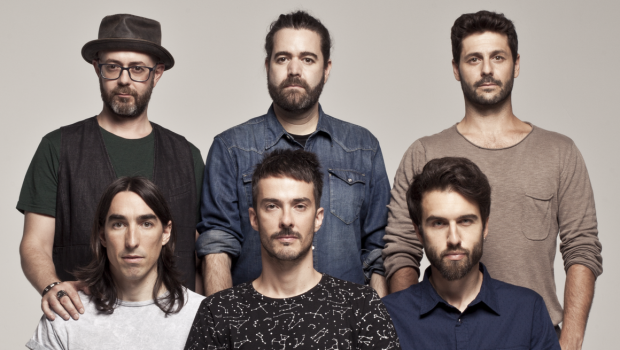


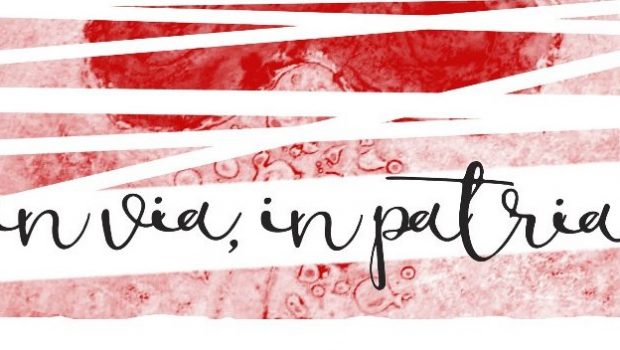
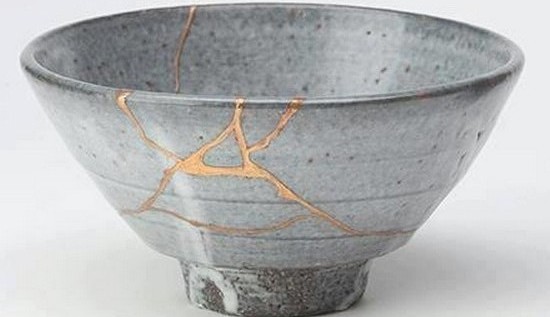
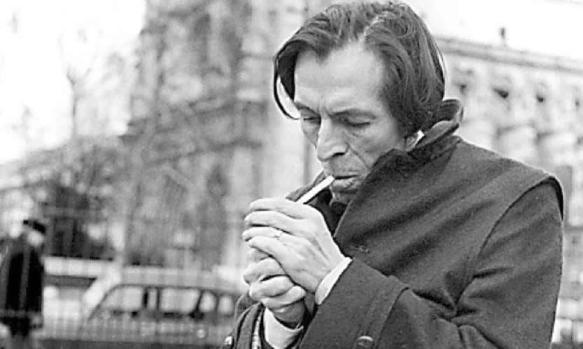


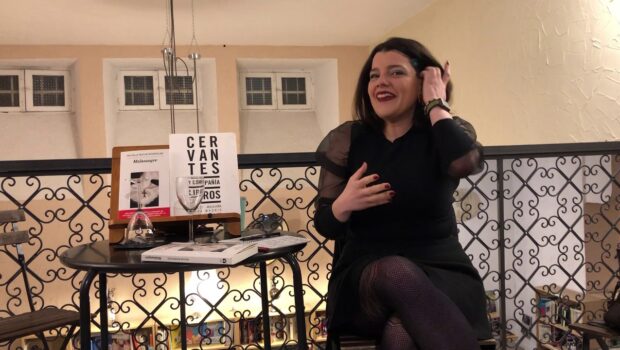
Me encanta que explique algunas palabras y la descripción del tono de voz del entrevistado, así se vuelve totalmente comprensible también para los que no nos gusta el rock.
Me parece un encuentro entre un periodista inteligente y una banda inteligente.
Debo confesar que no los conocía pero leyendo el texto me invita a buscarlos y escucharlos con atención.
….
“Tengo una fe extraordinaria en la capacidad del rock para establecer una mirada a la realidad. Creo que es por eso que sigue sobreviviendo con tanta fuerza … debido a su esencia crítica, rebelde y rebelde “, concluye Latorre.”
Excelente trabajo de introspección del Entrevistador…
Muy Bueno eso del maridaje de la Literatura y el Rock en donde las letras si importan,ademas del rock que no tiene limite de tiempo¡¨muy buena entrevista¡
Great description of the union between literature and rock. You should do more of these.